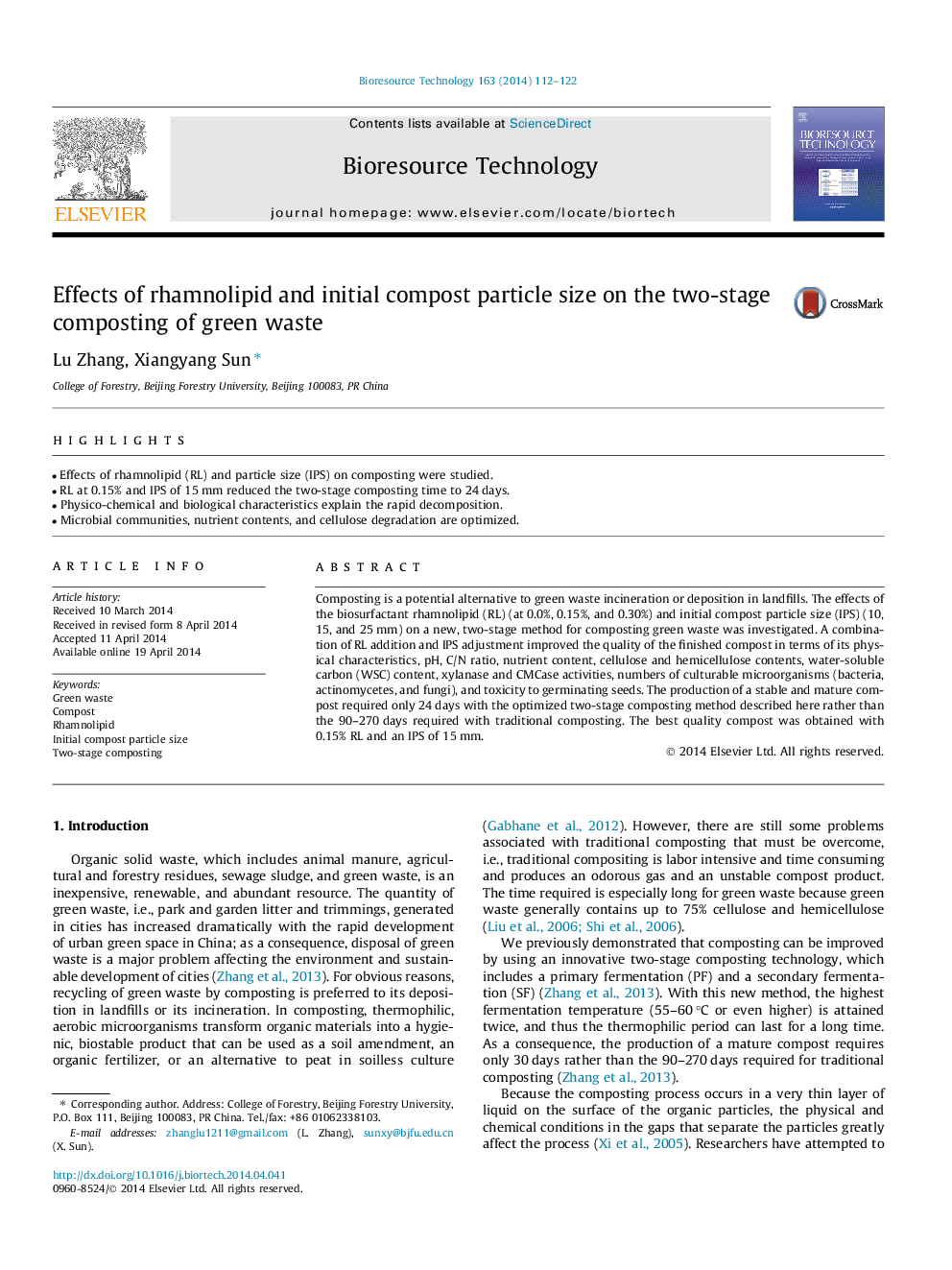| Article ID | Journal | Published Year | Pages | File Type |
|---|---|---|---|---|
| 680867 | Bioresource Technology | 2014 | 11 Pages |
Abstract
Composting is a potential alternative to green waste incineration or deposition in landfills. The effects of the biosurfactant rhamnolipid (RL) (at 0.0%, 0.15%, and 0.30%) and initial compost particle size (IPS) (10, 15, and 25Â mm) on a new, two-stage method for composting green waste was investigated. A combination of RL addition and IPS adjustment improved the quality of the finished compost in terms of its physical characteristics, pH, C/N ratio, nutrient content, cellulose and hemicellulose contents, water-soluble carbon (WSC) content, xylanase and CMCase activities, numbers of culturable microorganisms (bacteria, actinomycetes, and fungi), and toxicity to germinating seeds. The production of a stable and mature compost required only 24Â days with the optimized two-stage composting method described here rather than the 90-270Â days required with traditional composting. The best quality compost was obtained with 0.15% RL and an IPS of 15Â mm.
Related Topics
Physical Sciences and Engineering
Chemical Engineering
Process Chemistry and Technology
Authors
Lu Zhang, Xiangyang Sun,
